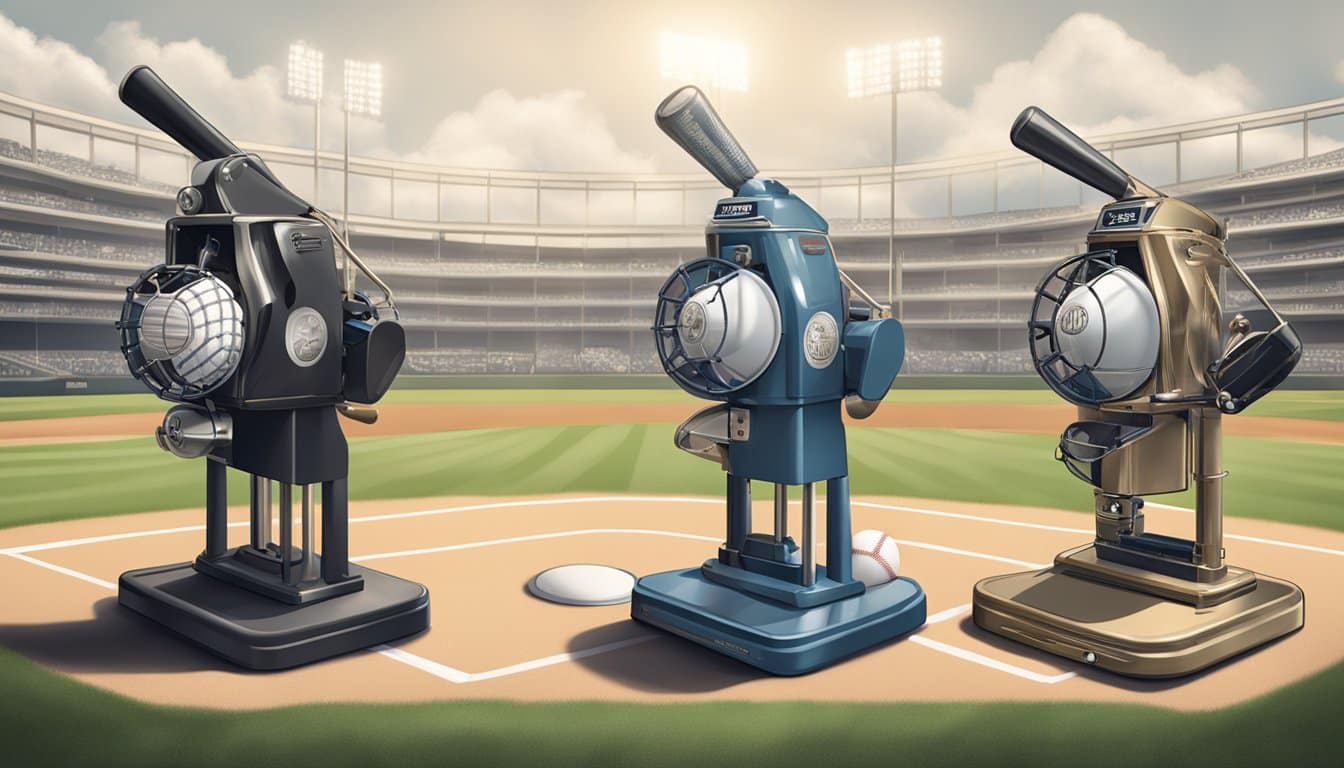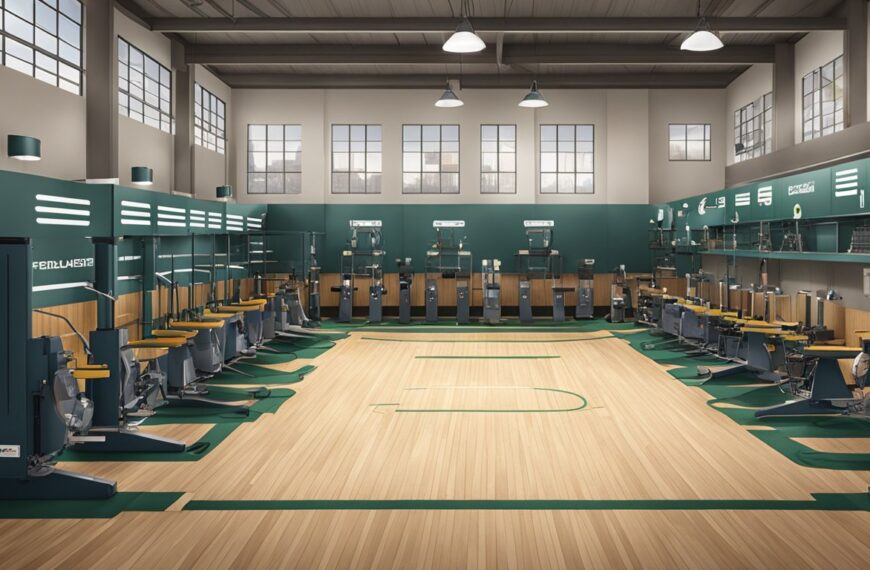Pitching machines have transformed baseball and softball training, providing consistent pitches for hitters looking to improve their skills. As technology advances, the classic debate between manual and electronic pitching machines gains complexity. Each type offers distinct benefits and drawbacks, catering to varied training needs, budgets, and preferences. Users should consider the differences in functionality, features, and potential skill development outcomes when choosing a pitching machine.
The manual pitching machine is often celebrated for its simplicity and reliability. It requires no power source, which offers flexibility in location and typically has fewer mechanical issues. Manual machines are usually more affordable, making them accessible to a wider range of players and coaches. Meanwhile, electronic pitching machines provide more sophisticated features. They can simulate different pitch types and speeds with precision, which can be highly beneficial for players at more advanced levels or those who require more diverse training.
Key Takeaways
- Pitching machines enhance training by providing consistent pitches.
- Manual machines are simple and portable, while electronic machines offer various pitch options.
- Choosing the right machine depends on the user’s training needs and budget.
Understanding Pitching Machines
Pitching machines are essential tools for baseball and softball training, offering consistent pitches to batters. They come in manual and electronic varieties, each with unique features suited for different needs.
Evolution of Pitching Machines
Pitching machines have progressed from simple, mechanical devices to sophisticated, electronic machines. Initially, they relied solely on manual operation, where a person would feed the ball and mechanically set the device into motion. Manual machines still exist today, often appreciated for their portability and simplicity.
Electronic pitching machines, on the other hand, have introduced automated features such as variable speeds and pitch types. They can replicate a wide range of pitches, from fastballs to curveballs, using motors and electronic controls.
Manual vs Electronic: Core Differences
- Mechanism of Operation:
- Manual: Operated by a spring-loaded arm or hand-fed system.
- Electronic: Utilizes electric motors to pitch the ball.
- Control and Adjustability:
- Manual: Often has limited speed adjustments.
- Electronic: Offers precise control over pitch speed, angle, and type.
- Power Source:
- Manual: Human-powered, requiring no external power source.
- Electronic: Often needs access to electricity or a battery pack.
- Portability:
- Manual: Generally more portable due to lack of electronic components.
- Electronic: May be less portable but offers greater functionality.
Key Considerations for Choosing Pitching Machines
When selecting a pitching machine, it’s important to consider the:
- Skill Level: Manual machines may be better for beginners, while electronic machines can offer advanced players a more challenging experience.
- Portability Requirements: If transport is a concern, a manual machine is typically lighter and easier to move.
- Power Availability: Electronic machines need a power source, which may limit where they can be used.
- Budget: Electronic machines are generally more expensive due to their advanced features.
- Training Needs: Consider the type of pitches required and the level of adjustability necessary.
Choosing between manual and electronic pitching machines depends on one’s specific training needs, budget, and convenience preferences.
Manual Pitching Machines
Manual pitching machines offer a reliable and budget-friendly way to practice batting. They are notable for their simplicity and ease of use, which makes them a popular choice for individual practice and team settings.
Benefits of Manual Pitching Machines
Manual pitching machines are highly regarded for their portability and lightweight design, making them easy to transport from one location to another. They do not require electricity or batteries, ensuring players can set up and practice their batting anywhere. These machines are generally affordable and budget-friendly, which is beneficial for individuals and organizations mindful of their spending. When it comes to improving hand-eye coordination, manual machines provide consistent pitches, allowing batters to refine their technique effectively. Additionally, their easy-to-use mechanism ensures that individuals of all skill levels can operate the machine without complex setup procedures.
Popular Manual Machine Models
Two standout models in the realm of manual pitching machines are the Louisville Slugger’s Blue Flame and Black Flame. Both machines are versatile, capable of pitching a variety of balls, including baseballs and softballs.
- Louisville Slugger Blue Flame:
- Functionality: Can throw any type of baseball or softball up to 45 mph for baseball and 60 mph for softball.
- Features: Offers a variety of pitches including fastballs, ground balls, and pop-flys.
- Portability: It is lightweight and easy to carry, making it suitable for practice sessions anywhere.
- Louisville Slugger Black Flame:
- Functionality: Capable of throwing harder and faster than the Blue Flame, with speeds that can reach up to 50 mph for baseball.
- Features: Similar to the Blue Flame with the added benefit of increased speed for a more challenging batting practice.
Both models are manually operated and are praised for their durability and the consistency they bring to practice sessions. These machines enable both baseball and softball players to develop their batting skills without the need for an additional pitcher.
Electronic Pitching Machines
Electronic pitching machines offer precise speed control and a consistent pitching experience that can be tailored to a player’s needs. They typically come with a variety of features, including digital displays and adjustable settings, contributing to their popularity among both amateur and professional players.
Advantages of Electronic Machines
Consistency: Electronic machines provide consistent pitches, which is critical for hitters looking to improve their timing and batting average.
Adjustable Speeds: They often feature adjustable speeds, allowing users to practice against a variety of pitches—from slow curves to fastballs.
Programmability: Many models come with programmable settings, enabling a sequence of different pitches to be delivered without manual adjustment.
Digital Display: A digital display often provides clear and immediate feedback on pitch speed and settings.
Top Electronic Pitching Machines
- JUGS BP1 Baseball/Softball Pitching Machine
- Speed range: 20-70 mph
- Features: Digital speed readout, Quick and easy speed adjustments
- Durability: Constructed for heavy use with a five-year guarantee
- Hack Attack Baseball Pitching Machine
- Speeds: Up to 100 mph
- Features: Offers three-wheel design for better visibility and accuracy
- Durability: Strong metal parts and reliable performance
- JUGS Lite-Flite Machine for Baseball and Softball
- Battery life: Up to 3 hours of continuous use
- Features: Lightweight, portable, and can be used for indoor practices
- Speeds: Capable of throwing Lite-Flite and Bulldog baseballs and softballs
- Zooka: ZS740 Portable Pitching Machine
- Battery-powered: Rechargeable battery that lasts approximately 4-5 hours
- Features: Digital speed readout, adjustments for different pitches
- Portability: Extremely lightweight and easy to transport
- First Pitch Baseline Pitching Machine
- Speeds: Up to 70 mph
- Durability: Strong steel construction with adjustable legs for stability
- Versatility: Throws baseballs, softballs, and dimple balls
- JUGS Small-Ball Pitching Machine
- Features: Increases focus with small-ball practice
- Portability: Lightweight, perfect for travel teams or home use
- Speeds: Throws a JUGS Small-Ball at speeds up to 75 mph
Each electronic pitching machine is designed to enhance the training experience through its blend of features, durability, and portability, making them a substantial investment for serious players aiming to refine their skills.
Pitching Machine Features and Functionality
Choosing the right pitching machine requires understanding its features and functionality. The following subsections dive into the specifics of machine speed, pitch versatility, and design for transportation and setup.
Speed and Velocity
Pitching machines cater to a range of speeds, typically measured in miles per hour (mph). Manual machines may offer a consistent speed that relies on mechanical adjustments, while electronic machines can often reach higher speeds and allow for precise electronic control. A machine’s speed settings are crucial for matching practice to a player’s skill level, with some machines able to pitch at velocities exceeding 90 mph.
- Manual Machines: Typically feature a fixed range of speeds.
- Electronic Machines: Offer adjustable speeds, often up to 90+ mph.
Versatility and Pitch Variety
The ability to throw different pitches is essential for comprehensive training. Many modern pitching machines are designed to throw a variety of pitches such as fastballs, curveballs, and sliders. Versatility also extends to the type of baseballs used, with certain machines being compatible with both regulation and practice balls.
- Manual Machines: May have limited pitch variety; often designed for specific pitch types.
- Electronic Machines: Tend to be more versatile, often equipped with settings for multiple pitch types.
Portability and Stability
Portability is a significant aspect, especially for teams and players who need to move machines between locations. Lightweight design and wheels enhance mobility. Stability is integral to ensure safety and accuracy of pitches. Machines designed for portability usually incorporate features like retractable legs or foldable designs without compromising stability.
- Manual Machines: Often more lightweight and portable but may vary in stability.
- Electronic Machines: Generally incorporate sturdy construction with wheels for easier transport.
| Features | Manual Machines | Electronic Machines |
|---|---|---|
| Speed Range (mph) | Fixed range, lower max speed | Wide range, higher max speed |
| Pitch Types | Limited (specific pitches) | Multiple (including curveballs, sliders) |
| Portability | Typically more portable | May be heavier; often have wheels for transport |
| Stability | Varies | Usually designed to be stable |
Each type of machine offers different advantages, and the best choice depends on the users’ specific needs regarding training intensity, pitch replication, and ease of movement.
Skills Development with Pitching Machines
Utilizing pitching machines can significantly enhance a player’s baseball skills by providing consistent and accurate pitches for batting and fielding practice. This allows for a focused approach to skill refinement.
Improving Hitting and Timing
Hand-eye Coordination and Hitting Skills: A pitcher’s machine is instrumental in refining a batter’s hand-eye coordination. By adjusting the machine’s settings, a batter can receive a variety of pitches, enabling them to work on their hitting against fastballs, breaking balls, and off-speed pitches. Consistent repetition reinforces muscle memory, crucial for improving hitting accuracy.
- Timing: The ability to time one’s swing with the pitch is central to successful hitting. Electronic pitching machines offer precise speed settings, helping batters fine-tune their timing to connect with the ball effectively.
Enhancing Fielding Techniques
Fielding Ground Balls and Fly Balls:
- Ground balls: Electronic pitching machines can simulate ground balls, allowing infielders to practice their approach and technique. By practicing regularly, players can improve their anticipation and reaction times.
- Fly balls and Pop-ups: Pitching machines also can project fly balls and pop-ups, providing outfielders the opportunity to develop their catching skills and judge the ball’s trajectory.
Accuracy and Repetition:
- The best pitching machines are those that offer consistent pitch placement. This consistency is key for players to develop accurate fielding skills through repetitive practice drills.
Practice Drills
Repetitive and Targeted Drills:
- Drills: Coaches often design drills that target specific skills, such as hitting to opposite fields or transitioning quickly from catching to throwing. Pitching machines allow for the repetition of these drills, reinforcing the skills being taught.
- Team Practice: The use of pitching machines during team practices frees up coaches and players to focus on specific areas, improving overall team performance with efficient use of practice time.
The combination of targeted practice, consistent repetition, and adjustable settings on pitching machines makes them a powerful tool for players and teams keen on enhancing their baseball skills.
Practical Considerations for Buyers
When purchasing pitching machines, buyers should meticulously assess their budget, the space where they’ll use the machine, and the maintenance requirements to make an informed decision.
Budget and Pricing
The budget is a critical factor when choosing between manual and electronic pitching machines. Prices for manual models typically range from $200 to $1,000, making them a cost-effective option for individual use or at youth practice levels. On the other hand, electronic machines can cost anywhere from $1,000 to over $3,000, suitable for more advanced training and features like variable speeds and pitches. Prospective buyers should consider the value for money based on their specific needs.
- Manual Pitching Machines:
- Price: Low to moderate
- Best for: Budget-conscious buyers, youth practice
- Electronic Pitching Machines:
- Price: Moderate to high
- Best for: Training facilities, advanced players
Space and Usage
Space requirements for a pitching machine are closely tied to its usage. A manual machine may be a better fit for spaces that are limited like a backyard or a small batting cage. They are typically lighter and more portable. Electronic machines, designed for a professional training facility or a larger batting cage, require more space but offer varied pitching options that can mimic real-game scenarios.
- Manual Pitching Machines:
- Space: Compact, portable
- Usage: Smaller spaces, simpler practice setups
- Electronic Pitching Machines:
- Space: Requires larger area
- Usage: Professional or larger settings
Machine Longevity and Maintenance
Longevity and maintenance are crucial considerations. Manual pitching machines, with simpler construction and fewer moving parts, often require less upkeep and can be more durable over time. Electronic machines provide more advanced features but come with increased complexity, meaning they may require more regular maintenance and potentially more costs down the line.
- Manual Pitching Machines:
- Durability: Generally more robust
- Maintenance: Minimal and cost-effective
- Electronic Pitching Machines:
- Durability: Dependent on electronic components
- Maintenance: More complex, potentially higher long-term costs
Choosing the Right Machine for Different Users
Selecting the ideal pitching machine requires considering the user’s sport, skill level, and intended use. It’s crucial to match the machine’s features with the user’s needs.
Machine Options for Teams and Coaches
For teams and coaches, durability and versatility are pivotal. A baseball or softball pitching machine should withstand rigorous use and offer various pitches to train players effectively. Electronic pitching machines, with their ability to replicate multiple pitch types at consistent speeds, are often the preferred choice for baseball and softball teams. Models like the Powernet Launch F-Lite provide a range of speeds and trajectories suited for both softball and baseball drills.
- Ideal features for teams:
- Multi-pitch capabilities
- High ball capacity
- Easy portability for field use
Selecting a Machine for Personal Use
When choosing a pitching machine for personal use, budget, space, and specific training goals are significant factors. Parents of youth players may opt for manual machines for their cost-effectiveness and simpler setup. However, an electronic machine might be more suitable if the player is focusing on advancing their skills with a variety of pitches.
- Considerations for personal selection:
- Baseball bat or softball bat compatibility
- Machine adjustability for different skill levels
- Space requirements for safe operation
Conclusion
When deciding between manual and electronic pitching machines, one must consider individual needs and preferences. Manual machines are more affordable and portable, while electronic machines offer greater speed and pitching variety.
Manual Machines:
- Cost-effective
- Easily transported
- Require manual adjustment
Electronic Machines:
- Higher price point
- Offer consistent pitching
- Feature variable speeds and pitches
Athletes seeking to enhance their batting skills can benefit from either type, depending on their training objectives and budget constraints.
Factors such as frequency of use, access to power sources, and required maintenance should influence the decision-making process. Institutions or individuals with a larger budget and the need for diverse training regimens might favor electronic pitching machines for their advanced capabilities.
Conversely, casual players, youth leagues, or those with limited space might opt for the simplicity and convenience of manual machines.
Ultimately, the choice should align with the user’s goals, ensuring that the machine selected enhances the training experience and aids in skill development. Both types have their places in different contexts, and careful evaluation will lead to the best selection for the intended user.
Frequently Asked Questions
When selecting a pitching machine, consumers often have questions regarding performance, utility, and value. This section aims to address these common inquiries.
What are the key factors to consider when selecting a pitching machine?
Buyers should consider the machine’s pitch speed range, ball compatibility, portability, durability, and cost. The intended use, such as for individual practice or team drills, also affects the decision.
How does the speed and accuracy of manual pitching machines compare to electronic ones?
Manual pitching machines usually offer consistent speeds and are less expensive, but they may lack the precision of electronic machines. Electronic machines provide a wide range of speeds and pitch types, catering to a variety of skill levels.
What are the benefits of using pitching machines for youth and high school baseball training?
Pitching machines allow for repetitive practice, helping youth and high school players develop their batting skills. They can simulate various pitches, which helps in improving hitting mechanics and preparing for live pitchers.
Is it more beneficial to invest in a portable pitching machine for practice?
A portable pitching machine is advantageous for those who need to transport it between locations, such as home and the field. It allows for flexibility in practice settings and is often more suited for personal use.
How can a pitching machine improve a player’s batting timing and consistency?
A pitching machine offers repeated exposure to specific pitches, allowing players to practice their swing until it becomes consistent. Regular use can lead to improved timing, as batters learn to anticipate the ball’s arrival.
What should I look for in a pitching machine to ensure it is worth the investment?
Prospective buyers should look for a machine with adjustable speeds and pitch types to match their training needs. A robust construction, warranty, and positive user reviews are indicators of a worthwhile investment.













